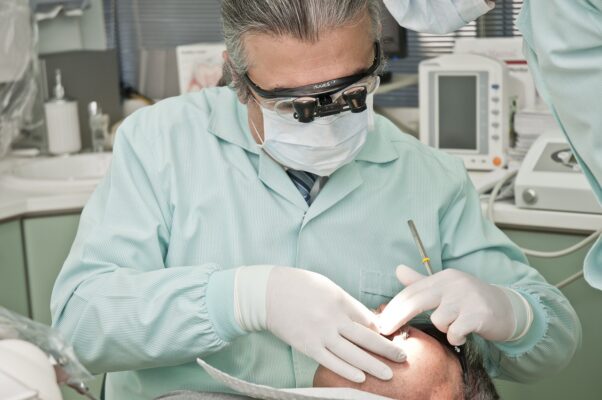Can Anyone Undergo Hair Transplantation?
Hair loss is a common concern for many people, and hair transplantation has become an increasingly popular solution for those looking to restore their hairline. However, not everyone may be a suitable candidate for this procedure. In this article, we will discuss who can undergo hair transplantation and what factors to consider before getting the procedure done.
Table of Contents
- Introduction
- What is Hair Transplantation?
- Eligibility Criteria for Hair Transplantation
- Age
- Health
- Type of Hair Loss
- Hair Texture and Density
- Preparing for Hair Transplantation
- The Hair Transplantation Procedure
- Post-Procedure Care
- Results and Expectations
- Risks and Complications
- Alternative Hair Loss Treatments
- FAQs
- What is the success rate of hair transplantation?
- Can women undergo hair transplantation?
- How long does it take for the transplanted hair to grow?
- Is hair transplantation painful?
- How much does hair transplantation cost?
Introduction
Hair loss affects millions of people worldwide, and it can have a significant impact on one’s self-esteem and confidence. Hair transplantation is a surgical procedure that involves transferring hair follicles from one part of the body (usually the back of the head) to the balding areas. The procedure has become increasingly popular in recent years, with more and more people opting for this solution to their hair loss problems. But can anyone undergo hair transplantation? Let’s find out.

What is Hair Transplantation?
Hair transplantation is a surgical procedure that involves extracting hair follicles from one part of the scalp (usually the back of the head) and transplanting them to the balding areas. The procedure is typically done under local anesthesia, and it can take several hours to complete, depending on the extent of the hair loss.
Eligibility Criteria for Hair Transplantation
Not everyone is a suitable candidate for hair transplantation. Here are some of the factors that doctors consider when determining if someone is eligible for the procedure:
Age
Hair transplantation is not recommended for individuals under the age of 25. This is because hair loss may still be progressing, and it may be difficult to predict the extent of the baldness in the future.
Health
Before undergoing hair transplantation, individuals need to be in good health. Those with medical conditions such as diabetes, hypertension, or heart disease may not be suitable candidates for the procedure. Smoking can also affect the healing process, and individuals who smoke may be advised to quit before the surgery.
Type of Hair Loss
Hair transplantation is most effective for individuals with androgenetic alopecia, also known as male or female pattern baldness. Those with other types of hair loss, such as alopecia areata or scarring alopecia, may not be suitable candidates for the procedure.
Hair Texture and Density
The texture and density of the hair in the donor area (usually the back of the head) are important factors to consider before undergoing hair transplantation. Those with coarse, curly hair tend to have better results than those with fine, straight hair. Similarly, those with high hair density in the donor area tend to have better results than those with low hair density.
Preparing for Hair Transplantation
Before undergoing hair transplantation, individuals need to prepare themselves both physically and mentally. This may involve stopping certain medications, quitting smoking, and preparing for the recovery period after the surgery.
The Hair Transplantation Procedure
The hair transplantation procedure typically involves the following steps:
- The surgeon will clean the donor and recipient areas and administer local anesthesia to numb the scalp.
- Hair follicles will be extracted from the donor area using either the follicular unit extraction (FUE) or follicular unit transplantation (FUT) method.
- The extracted hair follicles will be prepared under a microscope and separated into individual grafts.
- The surgeon will create tiny incisions in the recipient area where the hair will be transplanted.
- The grafts will be carefully placed into the incisions, taking care to ensure that they are oriented in the correct direction.
- The surgeon will repeat this process until all the grafts have been transplanted.
The duration of the procedure will depend on the number of grafts needed and the method used. FUE is typically a longer procedure than FUT, but it does not leave a linear scar.
Post-Procedure Care
After the procedure, individuals will need to take care of their scalp to ensure proper healing and optimal results. This may include taking medications, avoiding certain activities, and following a specific hair care regimen.
Results and Expectations
Hair transplantation is a long-term solution for hair loss, and individuals can expect to see results within six to nine months after the procedure. It is important to note that the transplanted hair will initially fall out before regrowing. However, the new hair will be permanent and will continue to grow naturally.
Risks and Complications
As with any surgical procedure, hair transplantation carries some risks and potential complications. These may include bleeding, infection, scarring, and hair follicle death. It is important to discuss these risks with your surgeon before undergoing the procedure.
Alternative Hair Loss Treatments
Hair transplantation is not the only option for treating hair loss. There are several non-surgical treatments available, including medications, laser therapy, and hair systems. These options may be more suitable for individuals who are not eligible for hair transplantation or who do not want to undergo surgery.
FAQs
What is the success rate of hair transplantation?
The success rate of hair transplantation varies depending on several factors, including the skill of the surgeon, the method used, and the individual’s hair type and density. However, on average, the success rate is around 90%.
Can women undergo hair transplantation?
Yes, women can undergo hair transplantation. However, the eligibility criteria may be different from men, and women may need to undergo additional tests to determine their suitability for the procedure.
How long does it take for the transplanted hair to grow?
The transplanted hair will initially fall out within a few weeks after the procedure. However, new hair growth will typically start within three to four months, with full results visible within six to nine months.
Is hair transplantation painful?
The procedure is typically done under local anesthesia, so there should be no pain during the procedure. However, individuals may experience some discomfort and soreness in the days following the surgery.
How much does hair transplantation cost?
The cost of hair transplantation varies depending on several factors, including the extent of the hair loss, the method used, and the location of the clinic. On average, the cost can range from $4,000 to $15,000.

